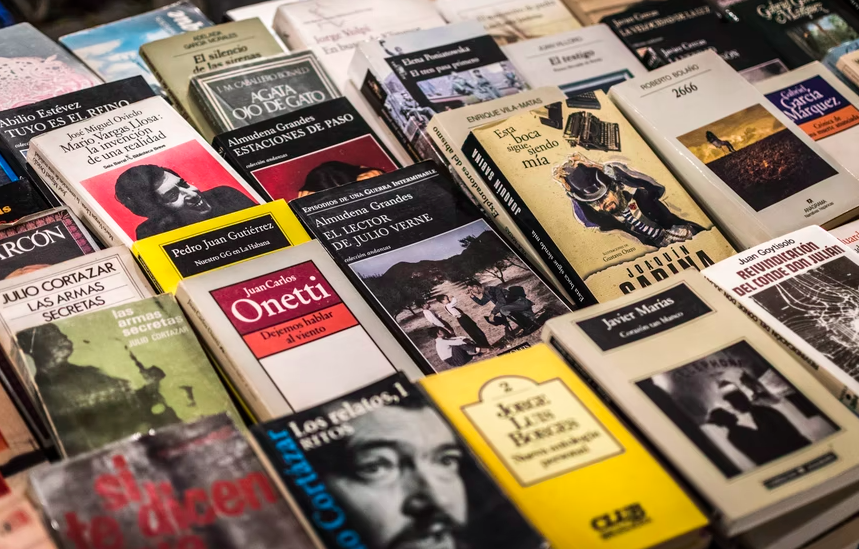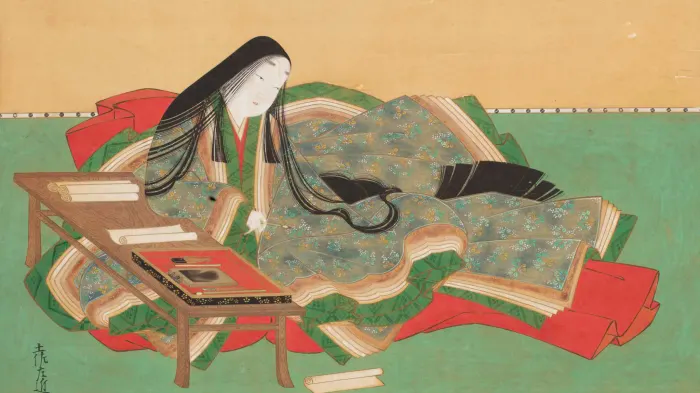What Is A Novel?

What is a novel? As per the novel definition found in most dictionaries, it’s a lengthy piece of fiction depicting the story of a human experience with narrational style prose. A novel will take you through a complex sequence of events, memories, and experiences revolving around several characters and locations.
The term novel opens up a vast array of frameworks, genres, writing styles, and niches. Some common novel genres include romance, mystery, fiction, thriller, historical, historical fiction, gothic, epistolary, etc. Essentially, the novel meaning gives birth to an intricately woven form of storytelling that brings to life the entire journey of one or more characters.
It has a beginning that sets the stage with an immersive buildup, hooking its readers for an action-packed ride of mysteries, revelations, climaxes, an anti-climax, and finally, a happy or befitting ending. Needless to say, writing a compelling novel that’s hard to put down is a mammoth feat that demands talent and the passion for improving one’s craft.
Keep reading to learn more about what does novel means and explore guidelines that will help improve your storytelling talents.
What Is a Novel?
A novel is an intricately contrived, fictional tale that depicts human experiences and stories with the intention to instruct the reader or simply regale a story. It is one of the most popular and enjoyable forms of fiction, and it’s primarily characterized by its length.
The novel def refers to a lengthy, drawn-out piece of fiction that reveals the progression of a story over an extended period of time. A novel cannot be short, for a shorter piece of fiction would be a short story or a novella. In order to classify under the novel definition, the story must be a lengthy narrative of the lives and experiences of its characters.
However, extended length isn’t the only characteristic to keep in mind while writing a novel. As we unravel the characteristics of a novel, have you ever wondered how and when this form of storytelling emerged?
Interestingly, the origins of novel-writing are traced back to 1010, when Murasaki Shikibu is said to have written his Tale of Genji. Novels did not make it to Europe until the early 17th Century, and the continent was obsessed with poetry and tales of chivalry. William Shakespeare had a profound influence in introducing new forms of storytelling, giving rise to powerful literary movements that introduced a wide array of fictional subgenres.
Today, novelists pen down stories in a multitude of genres and subgenres to narrate the experiences of their characters. Most novels pen down the experiences of their characters, while some authors focus on conflicting thoughts and emotions. Essentially, all novels play around certain values, ideas, thoughts, and inner emotions. The idea is to make the experience of reading a novel much more poignant and heartfelt than most other forms of fiction and literature.

Traits & Characteristics
It wouldn’t be a mistake to say that the novel definition represents the journey of characters, taking its readers on a rollercoaster ride of happiness, sadness, excitement, adventure, and other emotions. Naturally, novels are not written for public consumption but rather, readers who enjoy reading a particular genre.
For instance, J.K. Rowling and JRR Tolkein wrote for people consumed by fantastical tales of faraway magical lands, elves and goblins, and wicked wizards. Likewise, Sir Arthur Canon Doyle wrote for an audience that enthusiastically devoured tales of cunning detectives and criminals hiding from the law. Every author or budding writer must find their niche, or their creative calling, so to speak, to connect with an audience.
Therefore, choosing a niche is a crucial decision whenever you decide to pen down a novel. Since it’s a lengthy piece of fiction, the story you decide to pen down must be a story worth telling. LivingWriter, a vibrant community for budding and seasoned wordsmiths, can help provide the inspiration you seek to find your niche. Communities like LivingWriter help word crafters harness their talents and hone their craft with continual learning.
If you need more help understanding the novel definition, here are some common characteristics of a novel:
▪ Novels are written in prose, and a story can have one or multiple narrators. The author can choose to regale the story in a first-person perspective or a third-person point of view. Many novelists adopt a stylized, epistolary form of writing.
▪ Novels are lengthy, drawn-out stories depicting the evolution of a story and the journey of its characters.
▪ A novel can be entirely fictional or semi-fictional, such as stories inspired by real events or people who exist or have passed away. Non-fictional prose is not a novel.
Are all novels fiction? Yes, but not all fiction is classified as novels. Many writers dip into historical facts, universal truths, and real human experiences while penning down fictional tales. Historical fiction is a popular genre where writers rely on historical facts and narratives to weave a compelling and fascinating story.
Novel Structure and Elements
The structure is a crucial guideline to consider when planning the story for a novel. Many writers like to create a chronological structure of events, dividing the story into various chapters or parts. Others like to mix up the past and present, taking the reader through two parallel universes simultaneously. Authors can choose between a wide array of structures to find the suitable format for segmenting their story.
Let’s take a look at some key elements that create an engrossing novel:
Segments & Chapters
Novels revolve around multiple themes, segments, plots, and characters. Each segment or chapter introduces a new theme and builds upon the plot to make it thicker and more complex. Some writers like to introduce various characters with dedicated chapters or segments, regaling their story before thickening the plot with conflict and challenges.
Others prefer dividing the story into various chunks to focus on various elements of the story. The division and structure help maintain readability, making a lengthy novel digestible and comprehensive. Chapters and divisions break the novel into time periods or mark transitions between plots and themes. Essentially, they help move the story forward to keep it exciting and fluid.
Suppose you’re a budding writer struggling to give your plot and sequences a readable structure. In that case, you should embrace the easiest and most popular plot structure: the three-act structure.
This structure revolves around three acts:
Act 1: The Opening
Much as the word implies, the opening refers to the introductory chapters that introduce the characters, locations, themes, and plot, setting the stage for the plot to thicken and get more complex. These chapters are crucial to acquaint the readers with the leading characters, taking them deep into the world of your fictional tale.
Act 2: Inciting Incident
An inciting incident is an event or a series of events that shake up the perfectly charming and cozy world of the leading characters. It’s an event or experience that prompts the characters into embarking on an adventure. This incident could be a challenge, a catastrophe, a mission, or a tumultuous turn of events that shakes everything up. Act 2 is the segment where the story truly launches into action.
The protagonist can pursue any goal or undertake a journey filled with challenges to reach the final destination. Act 2 is the midway point that transforms the story into a rollercoaster of emotions, climaxes, suspense, and mystery. It builds excitement and energy to lead the story towards its completion.
Act 3: Finale & Fallout
The last act marks the ending of the novel. It could dwell into a moral lesson or leave the characters rejoicing in eternal bliss, or maybe even something tragic, philosophical or dramatic. The final act must do justice to the emotional buildup and climaxes leading towards the end. It’s wise not to rush towards completion as Act 3 is the most awaited segment for the readers.
If you need more help structuring your plot and understanding sequences, LivingWriter can help you find incredible resources. Learning about plot structuring can improve your storytelling craft tremendously.
Creating a Timeline
Stories need timelines, which is why many authors rely on historical facts and narratives to base their characters against a familiar background in history. For instance, Bernhard Schlink’s The Reader is based against the backdrop of World War II, using historical events as a foundation to weave a tale of romance, heartbreak, and salvation.
Many writers, such as George R. R. Martin, create their own universe, timelines, historical narratives, and facts. The Game of Thrones series is indeed a magnum opus for budding writers to take inspiration for creating a fictional universe.
Whether you work with historical narratives or create your own world, setting your story against a concrete timeline is crucial. Your story must lead the reader through different timelines and periods, allowing the characters to evolve and the plot to thicken. Timelines build suspense and mystery, leading the story towards a thematic point of explosion.
Perspectives
Some novels have narrators regaling the tale in a third-person perspective, while others allow different characters to narrate their own story. The author can play around with different perspectives or stick to one point of view throughout the novel. It’s entirely a matter of choice and deciding which point of view is best to tell the story at hand.
A novel can switch between multiple perspectives, allowing each character to tell their story so the readers can connect with their emotions and thought processes. Novels can also be written with an outside voice narrating the story.
Characters
Characters are the most vital ingredient of a novel as the story revolves around their life experiences and journey. People enjoy reading a novel because they connect and relate to the characters or find them inspiring and intriguing. The main lead of the story is the protagonist, while the main opponent is the antagonist.
Every novel weaves an intricate web of characters and continues adding new characters to keep the story moving with exciting plot twists. Suppose your story has a ton of characters like Leo Tolstoy’s War and Peace. In that case, it’s wise to create family trees depicting the lineage and ancestry of your characters to help readers connect the dots and avoid getting lost.
Weaving complex characters can prove challenging, but their perspectives and personalities make the novel richer and more intriguing.
Final Thoughts
Don’t focus too much on standard guidelines and rules if you’re working on your first novel. It’s a slow and steady process of trial and error, and with the right resources, you will find your work improving and expanding. The LivingWriter community can help you overcome the awful writer’s block as well as help you as you weave compelling plots that will have your readers devouring your words like a magical elixir.
Improvement is a continual and gradual process, and learning more about the novel definition and structure will help you immensely. You don’t need to focus on fitting your plot into a box with narrow confines and no room for creativity. Instead, use the structure as a scaffolding that you can discard once your plot is ready to thicken.
The world is waiting to read your novel. Get started now!